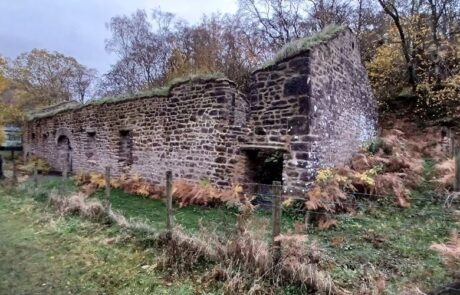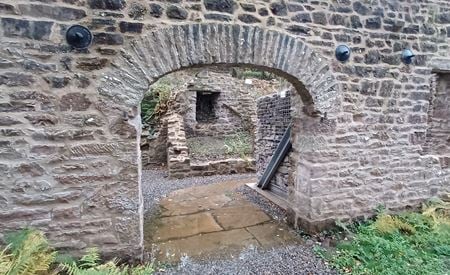News
Conservation at Augill smelt mill
17 November 2025
Conservation at Augill smelt mill removes it from Heritage at Risk Register
Historic England’s Heritage at Risk Register gives an annual snapshot of the health of England’s valued historic buildings and places. It helps to ensure they can be protected and continue to be enjoyed in the future. On Thursday 6 November 2025, Historic England revealed its Heritage at Risk Register 2025, which includes sites added to the register that are in need of help, as well as sites that have been rescued and their futures secured.
One site to be removed from the register this year is Augill Smelting Mill. It is a significant example of the industrial heritage of the North Pennines and was at risk due to major issues. Recent consolidation works carried out by the North Pennines National Landscape team as part of the Land of Lead and Silver project, have saved the monument for future generations.
Built in 1843 by the North Stainmore Company, this stone-built smelt mill once processed lead ore from the surrounding hills. The mill originally contained four ore-hearth furnaces, their smoke and fumes drawn through a long horizontal flue to a chimney positioned some 245 metres away on higher ground. Despite the initial promise of the local lead veins, production soon proved disappointing and the enterprise was short-lived.
By the mid to late nineteenth century, the building had been converted for the roasting of iron ore, another mineral found in the area. An early Ordnance Survey map lists it as an iron foundry. When the industry ceased towards the end of the nineteenth century, the structure was used as a stable before eventually becoming abandoned. The roof was removed in the mid-twentieth century, after which the building fell into dereliction.
The smelt mill consists of a long main room with a smaller chamber at its southern end. The east wall of the main room still bears the traces of the four hearths once used for smelting operations. Running along the same wall is the substantial flue which carried toxic gases up the hillside to the chimney beyond. Outside the north gable lies the remains of a wheel pit which once housed the waterwheel that powered parts of the process.
The building was changed several times. The walls were raised by about a metre, probably to add an upper floor so that the furnaces could be filled from above. Later new doorways and internal walls were added as the building was adapted for different uses. The machinery was removed and some of the old doorways and furnace openings were blocked up when it became a stable.
The surrounding landscape preserves many features associated with the mill’s operation. These include the line of the flue leading to its distant chimney, the remains of a leat that used to channel water to the site, former tracks, quarries, and a charcoal-burning platform.
The recent work undertaken by Heritage Consolidation Ltd for the North Pennines National Landscape team has ensured the survival of this historic structure. Conservation work has stabilised the walls, repointing with lime-based mortar, installing protective capping, securing loose masonry, and improving the structural integrity of the site, with large gabions now supporting the entrance and surrounding stonework and metal frames supporting the leaning west wall. These measures will protect the ruins from further erosion and collapse while allowing visitors to safely appreciate the site.
A small but notable feature of the south gable is its owl hole, a circular opening intended to encourage barn owls to nest within, keeping down the rodent population in an environmentally-friendly way. This detail serves as a reminder of how nature and industry once co-existed in this upland setting.
The work was part of the Land of Lead and Silver project which is led by the North Pennines National Landscape team and funded by The National Lottery Heritage Fund, thanks to National Lottery players, and Historic England.

![]()









